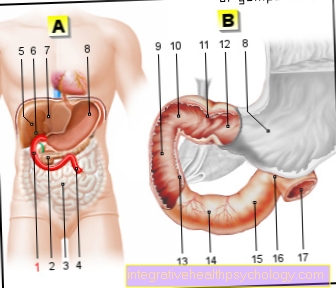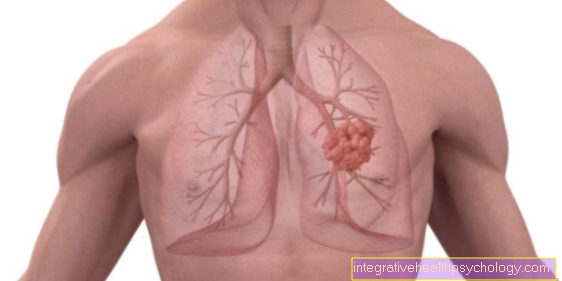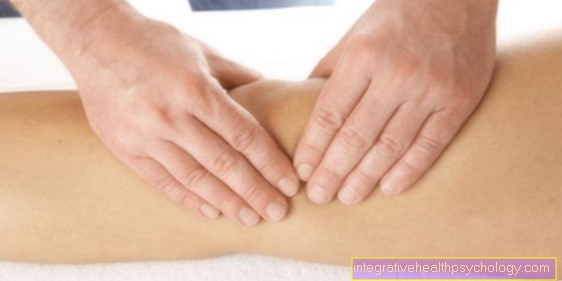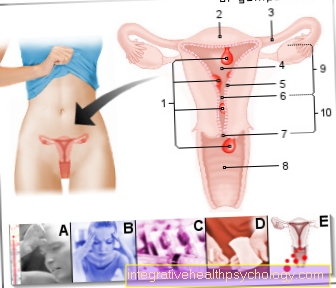Weight training for the elderly
Synonyms in the broadest sense
Functional strength training, age sports
introduction
Many sports providers and fitness studios have already reacted to the steady increase in the elderly population and adapted the sports offer to the needs of older people. A few years ago it was the ambitious fitness athletes and recreational bodybuilders who were represented in commercial fitness studios, nowadays it is more and more older citizens who are looking for the way to the gym. Strength training at the age of 50+ no longer refers to targeted muscle building for aesthetic reasons, but the health and preventive aspect of strength training increases with age. Often it is also older people who have practiced little or no sport in recent years and who seek medical advice to visit the gym.

Who is actually old?
From a socio-educational point of view, someone is old and receives a pension. From an economic point of view, someone is already 40 years old due to their poor performance. The World Health Organization (WHO) defines old as reaching the age of 65, and a popular saying goes that you are as old as you feel.
Typical diseases in old age
- arteriosclerosis
- cancer
- Heart attack
- dementia
- Cataract
- Diabetes mellitis
- arthrosis
- osteoporosis
- stroke
Goals of age-based strength training
Even in senior sports, a visit to the fitness studio is about the primary growth of muscle mass and the stabilization of joints and bones, but not primarily to look better, but to achieve health aspects of strength training. From the age of 30, there is already a reduction in muscular body mass (Catabolism). It comes roughly per lifedecade by a reduction of around 3%. From the age of 60 even by up to 10 percent. A targeted training of the Musculature can counteract this biological decline in the muscles. With adequate strength training, diseases such as osteoporosis, arteriosclerosis, high blood pressure and Obesity prevented and damage partially regenerated.
In old age, the continuous decline in muscle mass leads to more and more frequent problems in coping with everyday situations. Be it shopping in the supermarket, climbing stairs or doing business independently, to name just a few. The strengthening of the muscles should therefore always come from one functional point of view be seen.
Example: The training of the front thigh muscles (M. quadriceps femoris) can be done by exercising the leg extension. This involves stretching the knee joint. However, this muscle is never contracted this way in everyday motor skills. Rather, there is a diffraction in hip joint (e.g. getting up from a chair). It would therefore make more sense to train the muscle with the help of the leg press or, if the coordination of movements allows it, with squats.
Note:
Always pay attention to the anatomical and dynamic structure of the strength training exercises.
Effect of strength training
Even in senior sports, performance increases proportionally with continuous strength training. Therefore, the intensity of the training can be increased progressively. Age-appropriate strength training not only increases physical performance, but also counteracts all risk factors of a lack of exercise through targeted training of the muscles.The continuous increase in muscle mass leads to an increased breakdown of fat mass in the long term. By combining strength training and balance training, it could be proven that the age-related disproportionate occurring falls could be significantly reduced.
hazards
When training with weights, there are always a number of risks that must be minimized for correct training.
- Safety on the device: Always make sure that all weights are firmly anchored in the device and in the guide.
- Personal safety: You should never do strength training entirely by yourself. Pay attention to the presence of others when training at home.
- Safety of exposure: Never trust more than is actually possible. Always increase the number of repetitions before the weight.
- Exercises that are gentle on connective and supporting tissue: Bones, ligaments, tendons and cartilage are strengthened through regular strength training, but these signs of adaptation to the connective and supporting tissue are only achieved after several months to years. Injuries in this area always occur slowly and inconspicuously, so that it is usually too late at the first sign.
- Therefore: Avoid hyperextension movements, excessive weights and fast-moving movements.
Methods
The right load, intensity and break design are prerequisites for optimal training management at any age.
In health-oriented strength training, the intensity is around 40-60% of maximum performance. This corresponds to training with approx. 15-20 repetitions in one training set. At least 3 sets should be completed per device. The pauses between the individual sentences are around one minute.
A sufficient training (minimal program) can thus be carried out in about 30 minutes. A list of the most important basic exercises in senior sports can be found below.
Muscle groups
Since strength training for the elderly should always be carried out from a health perspective, some muscle groups should preferably be trained. First and foremost, training the supporting and holding muscles is recommended. These include the abdominal muscles and back muscles. In addition, the focus is on adequate, functional training of the leg muscles.
Tips for training
- You're never too old to start weight training. The muscles are adaptable for a lifetime.
- Find suitable training partners so that the sport can be carried out together.
- Always train under the guidance of a professionally trained trainer at the beginning.
- Start slowly. The training weight is never maximum or submaximal in strength training in old age.
- Always pay attention to the safety aspects.
Recommended exercises
Abdominal muscles:
- Abdominal crunch
Back muscles
- Lat pull
- Hyperextension
Leg muscles
- Leg press
Strength training in connection with endurance training
In order to optimize the training effects, age-appropriate endurance training should be integrated into a training plan. The most popular forms of training are Walking, cycling and swim. The load should be high enough that the athletes can talk while training. Every athlete, no matter what age, should decide for himself which endurance discipline he will choose. However, it is recommended that weight training and cardio training not be packed into one training session. A change would be better.
Stretching in old age
A sufficient muscle stretching program should not be missing in an optimally designed strength training plan. Mobility increasingly decreases, especially in old age. If you train the muscle regularly, you risk long-term shortening of the muscles, tendons and ligaments. Often one-sided movements in everyday life lead to mobility deficits, which can be counteracted by targeted stretching exercises. Since the load is not particularly high in strength training in old age, stretching exercises immediately before and after training are not mandatory. Targeted stretching exercises should, however, always be integrated into a separate training plan between training units.
You can get more here information on the subject
- Stretching
- stretching


























.jpg)

